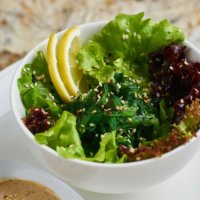This
post was originally published on
this sitehttp://chriskresser.com/

In a previous article I showed why, when used alone, thyroid hormone replacement often fails. In this post I’ll explain why optimizing your iodine intake is so crucial and why both too little and too much iodine can be harmful.
Iodine and hypothyroidism
Iodine deficiency is the most common cause of hypothyroidism worldwide. Once researchers realized this, health authorities around the world began adding iodine to table salt.
This strategy was effective in correcting iodine deficiency. But it had an unanticipated—and undesired—effect. In countries where iodine has been added to table salt, the rates of autoimmune thyroid disease have risen. The following is just a sample of studies around the world demonstrating this effect:
Why does this happen? Because increased iodine intake, especially in supplement form, can increase the autoimmune attack on the thyroid. Iodine reduces the activity of an enzyme called thyroid peroxidase (TPO). TPO is required for proper thyroid hormone production.
On the other hand, restricting intake of iodine can reverse hypothyroidism. In one study, 78 percent of patients with Hashimoto’s regained normal thyroid function with iodine restriction alone.
Selenium deficiency and Hashimoto’s
However—and this is a big “however”—it appears that iodine may only pose a problem for people with Hashimoto’s and other autoimmune thyroid diseases in the presence of concurrent selenium deficiency. One study in rats found that those given excess iodine only developed goiter if they weren’t consuming adequate selenium.
Other studies have shown that selenium protects against the effects of iodine toxicity and prevents the triggering and flaring of autoimmune disease that excess iodine without selenium can cause.
In my practice I always test for both iodine deficiency and Hashimoto’s when a patient presents with hypothyroid symptoms. If they are iodine deficient, I will start them on a trial of iodine and selenium together. In most cases, patients see a significant improvement. In a minority of cases, they cannot tolerate supplemental iodine even with adequate selenium intake.
Testing for iodine status
In most population studies, iodine is tested using spot urine, which is convenient and easy and correlates fairly well with recent iodine intake. However, studies have shown that spot urine and even 24-hour urine collections have high variability due to significant day-to-day variations in iodine intake.
Some clinicians have advocated iodine challenge urine testing, where a patient takes a large dose of iodine, often 50 mg, and collects urine for 24 hours afterward. This is based on research showing that 90 percent of ingested iodine should be excreted in the urine when the patient has sufficient iodine intake in the diet (1). However, this testing has not been validated to my knowledge and has been heavily criticized by several iodine researchers (2).
In my clinic, I use a combination of three tests:
- 24-hour urine iodine: to assess recent iodine intake
- Serum thyroglobulin: high thyroglobulin indicates low iodine status, and levels above 40 mcg/L are suggestive of deficiency (4)
- Hair iodine: to assess long-term iodine intake (3)
Correcting iodine deficiency
If iodine deficiency is suspected and there is no evidence of Hashimoto’s, supplementation with doses of 200 to 300 micrograms of iodine are safe and well tolerated. However, I would still recommend monitoring thyroid antibodies and other thyroid markers closely. Higher doses of iodine supplementation should only be used under medical supervision.
If iodine deficiency is suspected and you have Hashimoto’s, you can still try supplementing, but I would start with a very low dose, perhaps 100 micrograms of iodine, or simply increase intake of foods that contain iodine, such as sea vegetables, fish heads, or dairy.
You’ll also want to make sure that you are getting adequate dietary selenium to protect against any negative effects of excess iodine. The richest source of selenium is Brazil nuts, but it is also found in high quantities in seafood and organ meats.
The post Iodine for Hypothyroidism: Crucial Nutrient or Harmful Toxin? appeared first on Chris Kresser.












 For now classes are 6pm and 640pm at 2840 Wildwood st in the Boise Cloggers studio.
Book your class NOW!
click this ==>
For now classes are 6pm and 640pm at 2840 Wildwood st in the Boise Cloggers studio.
Book your class NOW!
click this ==>








